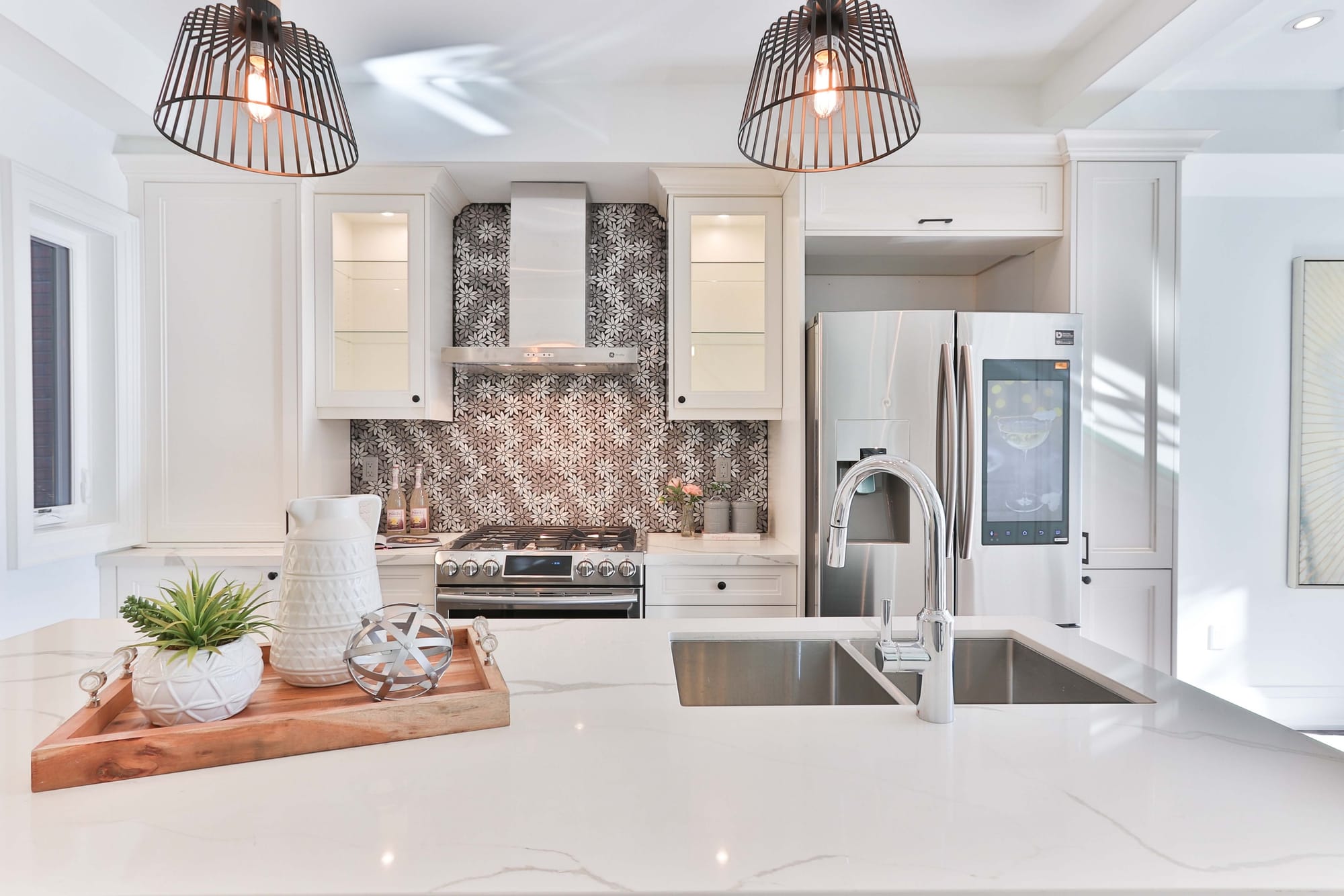
Modern architecture has constantly evolved, integrating innovative features that not only enhance aesthetic appeal but also improve functionality and sustainability. As new technologies and materials emerge, architects and builders are reimagining what homes can be. This evolution has led to the adoption of several groundbreaking architectural features in modern new build homes. Below, we explore some of the most compelling and innovative features that are shaping the future of residential architecture. These features, ranging from smart home technologies to eco-friendly materials, demonstrate how modern homes are being designed to offer more comfort, efficiency, and harmony with the environment.
1. Smart Home Technology Integration
One of the most significant trends in modern architecture is the integration of smart home technologies. These systems allow homeowners to control lighting, heating, security, and entertainment systems remotely through smartphones or voice-controlled devices. Innovations such as smart thermostats and automated lighting systems not only provide unprecedented convenience but also enhance energy efficiency, leading to reduced utility costs and a smaller carbon footprint.
2. Energy-efficient Materials and Design
In response to growing environmental concerns, modern homes are increasingly utilizing energy-efficient materials and designs. Features such as triple-glazed windows, high-quality insulation, and passive solar design are becoming standard. These elements help to retain heat during the winter and keep homes cooler in the summer, significantly reducing the need for artificial heating and cooling. Furthermore, the use of sustainable building materials like bamboo flooring, recycled steel, and low-VOC (volatile organic compounds) paints contributes to a healthier and more eco-friendly living environment.
3. Indoor-Outdoor Living Spaces
Blurring the lines between the indoors and outdoors is a popular trend in contemporary architecture. This is achieved through the use of large, sliding glass doors, outdoor kitchens, and seamlessly integrated patios and gardens. These features not only expand living space but also promote a healthier lifestyle by encouraging more time spent outdoors. They provide natural lighting and ventilation, further enhancing the home's energy efficiency and comfort level.
4. Modular and Prefabricated Components
The use of modular and prefabricated components is revolutionizing the construction of modern homes. These components are manufactured off-site in controlled environments, ensuring higher quality and faster build times. This method also reduces construction waste and on-site labor costs. Modular homes offer the flexibility to expand or modify layouts easily, making them a perfect choice for future-proofing a residence.
5. Rooftop Gardens and Green Roofs
Rooftop gardens and green roofs are not only aesthetically pleasing but also serve several practical purposes. They provide additional insulation, reducing energy costs, and can help manage stormwater runoff, reducing the risk of flooding. Moreover, they contribute to biodiversity, creating habitats for birds and insects, and can even be used to grow fruits and vegetables, promoting sustainable living practices.
6. Minimalist Design and Open Floor Plans
The minimalist design, characterized by clean lines, simple forms, and uncluttered spaces, continues to be popular in modern home architecture. This aesthetic is often coupled with open floor plans, which eliminate unnecessary walls to create spacious, multifunctional living areas. This design philosophy not only enhances the visual appeal of a space but also improves social interaction and mobility within the home.
7. Water-saving Fixtures and Rainwater Harvesting Systems
As water scarcity becomes a more pressing issue worldwide, modern homes are adopting water-saving fixtures and rainwater harvesting systems. Low-flow toilets, showerheads, and faucets reduce water consumption, while rainwater harvesting systems collect and store rainwater for use in irrigation, flushing toilets, and even washing machines. These features not only conserve precious resources but also reduce homeowners' water bills.
8. Natural Light Maximization
Maximizing natural light through strategic design is a key feature of modern homes. This is achieved by installing large windows, skylights, and strategically placed mirrors that reflect light deep into living spaces. Maximizing natural light not only reduces the need for artificial lighting but also enhances the well-being of residents by regulating their circadian rhythms and boosting their vitamin D intake.
9. Advanced Security Features
Modern homes are incorporating increasingly advanced security features to ensure the safety and peace of mind of their inhabitants. Technologies such as biometric access controls, advanced surveillance systems, and home automation tools allow homeowners to monitor their properties remotely and receive alerts in case of security breaches. These features, combined with traditional elements like well-designed lighting and secure locks, provide a comprehensive security solution.
10. Multi-purpose and Flexible Spaces
The demand for versatile living spaces is on the rise, as homeowners look for homes that can adapt to their changing needs. Features such as movable walls, convertible rooms, and built-in storage solutions enable the custom tailoring of spaces for work, leisure, or family activities. This adaptability is particularly appealing in urban areas, where space is at a premium, and the flexibility to change a room’s function can significantly enhance living conditions.
In conclusion, the innovative architectural features being integrated into modern new build homes are revolutionizing the way we live. From smart home technologies and energy-efficient designs to indoor-outdoor living spaces and multi-functional rooms, these features offer improved comfort, sustainability, and adaptability. As architects and builders continue to push the boundaries of what is possible, we can expect to see even more exciting developments in the future of residential architecture.
Join our FREE Webinar here for a Guide to New Home Construction: bit.ly/newhomeconstructionfreewebinar
Book a Meeting Here: bit.ly/zoom-book-a-meeting